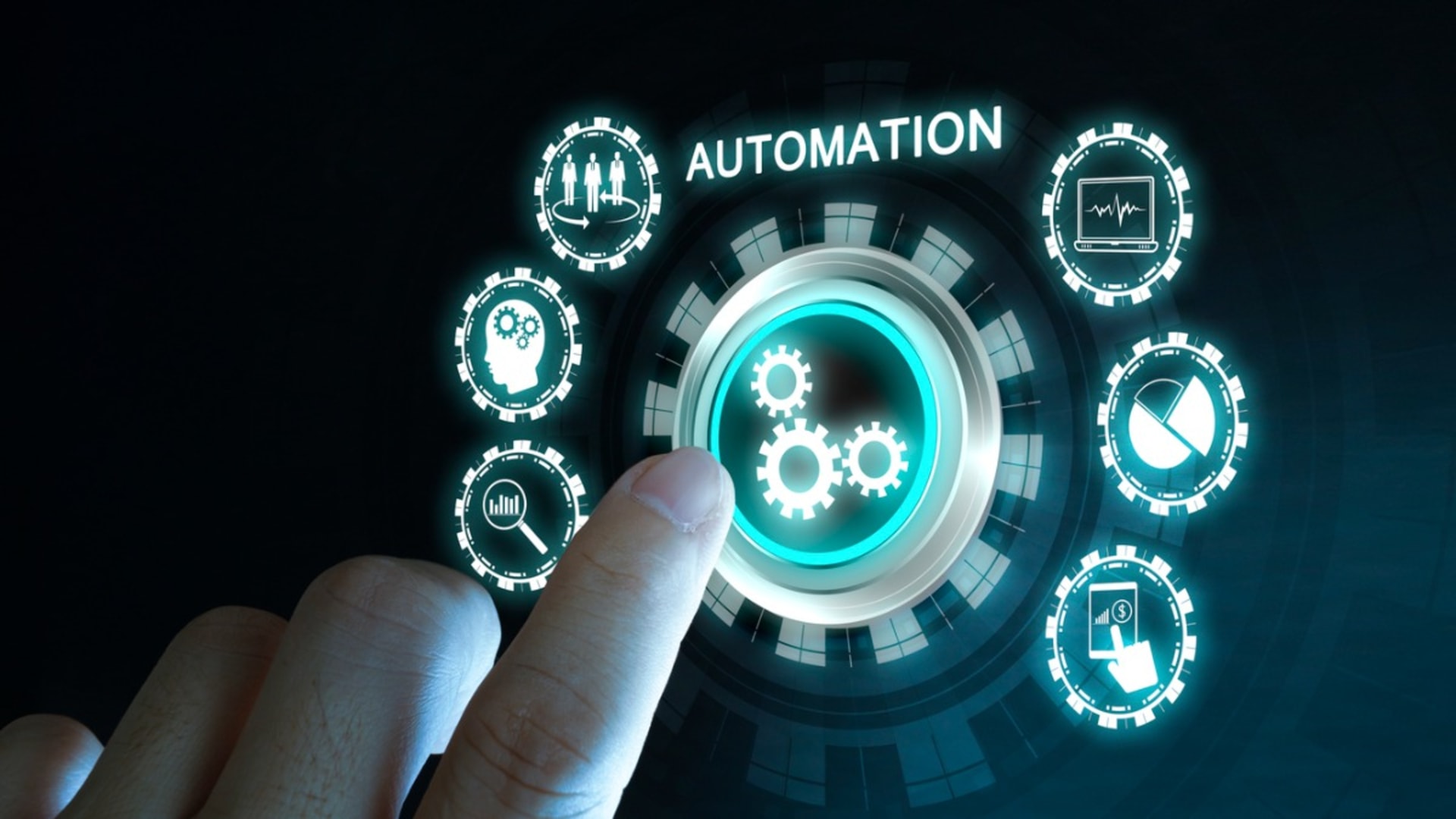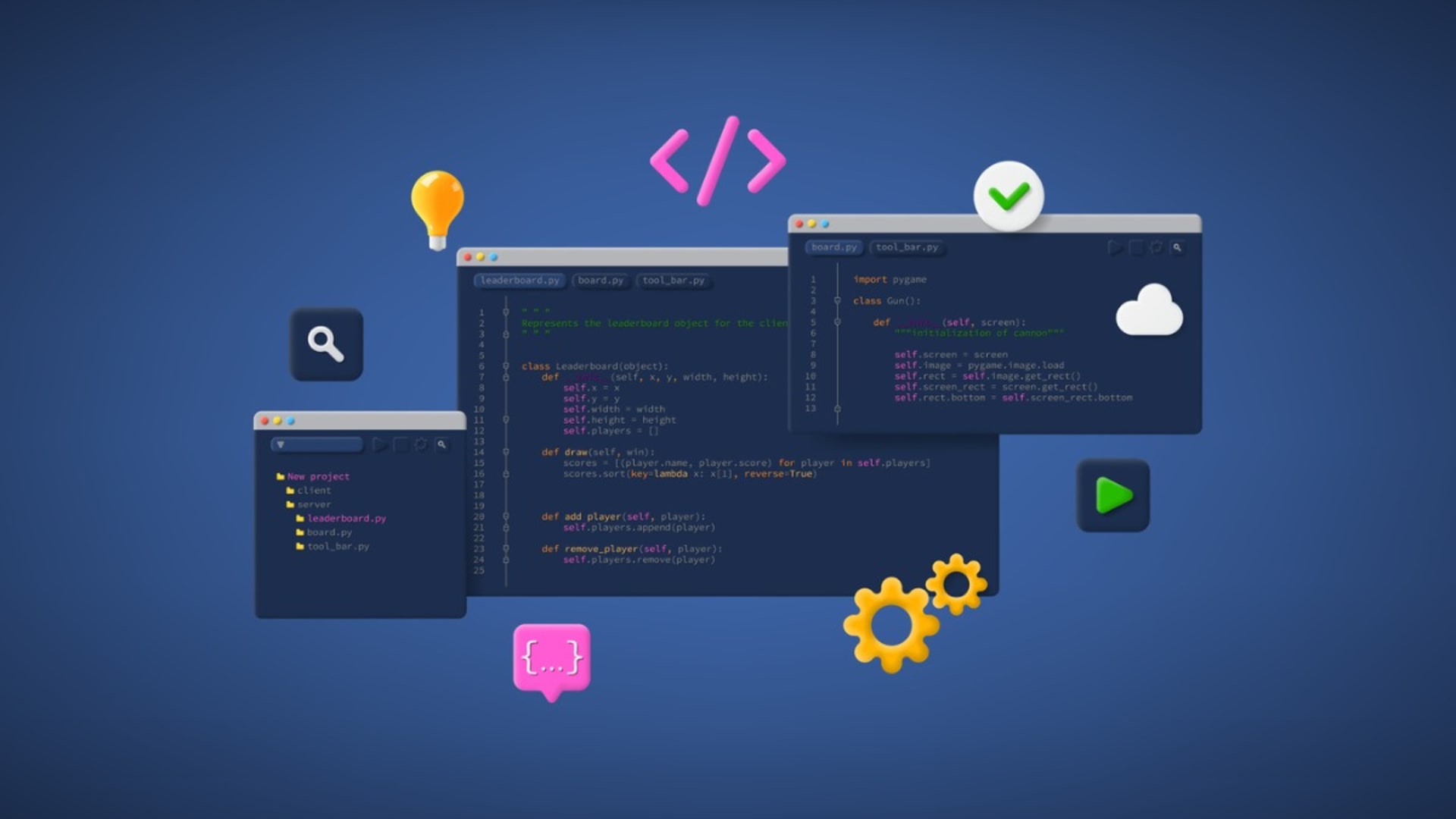In today’s highly competitive business world, your company has to take as many opportunities as possible to stay ahead. That mostly means leveraging the latest technologies to adjust your operations. The aim is to work smarter, not harder, and to do so, there’s no better way than implementing automation technologies. With BairesDev’s help, you can automate your entire workflow or the strategic processes you define. Our engineers can build sophisticated solutions to streamline your operations, boost your productivity, and increase your efficiency.
Automation Software Development Process
Developing automation solutions requires highly skilled engineers and a solid process to provide the best results. When you hire BairesDev to develop your automation technologies, you can rest assured you’ll get both. On one hand, we only work with the Top 1% of tech Talent, which means that all our engineering teams are composed of elite software developers with more than a decade of experience in the field.
On the other hand, we have a robust development process in place that works perfectly for building automation solutions. Thus, our teams go through 5 different stages that are crucial for the development of these technologies.
Requirements Gathering and Planning
We meet with you to know your needs and requirements. We can only automate a workflow we understand, which is why this first step is so important – it lets us know the issues you’re having and the goals you’re setting for your automation solutions.
Design
After we agree on a plan, our design team, software architects, and developers take your requirements and turn them into a blueprint for the automation solution. Thus, we work on a basic version of your product for you to have a first taste of the finished solution.
Development
When that basic version meets your expectations, we start working on the fully-fledged solution through an agile-led approach. In other words, our engineering team works in diverse iterations, building in increments and adjusting based on your feedback.
QA and testing
Depending on your project, we might have a separate stage to test your product or we might embed our tests throughout the development. Regardless of the path we take, the goal is the same – to ensure the automation solution works seamlessly, has fewer possible bugs, and has the highest quality.
Production and maintenance
When we are sure that your product is ready, we deploy it to production and let you use it in your daily operations. But our job isn’t finished then. We monitor the deployment and gather feedback from your team to make sure that the solution works as intended and make adjustments whenever necessary.
Automate Repetitive Tasks
One of the best things about automation solutions is that you can take full advantage of them regardless of the industry you’re in. That’s because these tools can easily take care of repetitive and mundane tasks, ranging from data collection and email marketing to manufacturing and generating insightful reports.
Automated testing
Proof that automation can work for virtually any company is how it serves us during development. In fact, we’ll use automation solutions to develop your own automation solution. One of the best ways in which we can use it is automated testing, which allows us to conduct automatic tests to your solution in search of bugs and vulnerabilities. By using it, we can reduce the time to market for your solution and increase its overall quality.
Automated builds
Another way in which automation helps us build your solutions is when generating builds. A build is the process of transforming the source code into a software artifact ready to run – and also the result of that process. That conversion process takes many steps, such as compiling, linking, packaging, and deploying (among others). As such, it can be time-consuming, which is why at BairesDev we use automation tools to take care of those various steps. Thus, we can provide you with your product in less time and with increased quality.
Attention to detail
One of the keys to an efficient automation solution is understanding how you do the tasks you want to automate. That’s why we put special emphasis on the Requirements Gathering and Planning stage, where we meet with you to understand your business, your goals, your overall strategy, and your needs.
We are very thorough in that initial step and we pay close attention to every detail in the tasks to automate. Thus, we take a deep look into the software you use, the methodologies you implement, and your overall flow to create a solution that better fits your objectives.
What can be automated
Automation solutions are so wonderful because they are highly adaptable and powerful. In other words, a lot of your tasks and your processes can be automated to a certain extent. There is, however, a limit to that. There are many tasks that require creativity, strategy, or originality, something only a human can pull off. But automation can be of great help with the rest (especially if they are simple or repetitive tasks).
Some of the tasks you can automate in your workflow include:
- Email marketing campaigns
- Data scraping and benchmarking
- Website monitoring
- Data entry
- Invoicing
- Supply chain management
- HR onboarding
- Regulatory compliance
What should be automated
The fact that you can automate a task doesn’t mean that you actually have to do so. How come? Because there are times that manually running a task that can be automated is a better path. Certain processes might need a human eye to get better results or could benefit from human control. In fact, what you should automate mainly depends on your workflow, your business strategy, your current abilities, and your resources.
For instance, you could automate HR onboarding but maybe you want a more human touch in that welcome. Or you want to conduct manual benchmarking efforts because you prefer quality over quantity. That means that there isn’t a recipe that tells you what you should automate – it all depends on your context. That doesn’t mean you shouldn’t automate anything, though. There’s always something you can automate to elevate your business – you only have to figure out what those tasks are.
With BairesDev’s help, that task becomes far easier, as our engineers have developed a keen eye to detect the best automation opportunities across numerous industries.
Our Methodologies portfolio for Process Automation
When working on automation solutions, there are certain methodologies that are better suited than others. That’s because building these tools requires a specific approach only certain methodologies can provide. That’s the reason why at BairesDev we use the following methodologies for process automation.
RAD (Rapid Application Development)
Rapid Application Development (RAD) is a great alternative for process automation, as it focuses on early integration, adaptability, and compartmentalization. That means it mainly relies on user feedback and testing discoveries to shape the product’s design and functions. In other words, it works with process automation as the engineering team discovers automation opportunities while collaborating with you.
Code generation
Today, there are plenty of tools (CASE applications, frameworks, and IDEs) that can generate code automatically. This can help our engineering teams to come up with new automation cases quickly. But doing that implies using a new approach to create that automation, which means understanding which code generation tools can aid us (and where they can do so). If done right, code generation can provide benefits to productivity, simplification, portability, and consistency. Overall, this helps reduce the time it takes our team to work on your solutions.
MDA/MDD (Model-Driven Architecture/Development)
Model-Driven Architecture (MDA) is an approach that helps teams design systems through platform-independent models. In other words, it specifies the operations of systems without tying them to a certain platform. Model-driven development (MDD), on the other hand, uses graphical models and pre-built components to create complex applications. Using both of these approaches, our engineering teams can come up with new automation cases that fit virtually any project (thanks to the platform-independent nature of MDA).
Frequently Asked Questions
What is process automation software?
Process automation software is an application that helps in streamlining any business process with ease, accuracy, and flexibility. The goal of these tools is to take normal, manual processes and automate them through different approaches (such as rule-based behaviors or adopting AI). These tools have vast potential and can be used across virtually any industry, but they are common in fields like software engineering, where the automation opportunities are more evident.
What are examples of business automation?
The automation of business processes is increasing rapidly, which is why there are plenty of examples all around us. Among them, one of the most established ones is data gathering and cleaning. Through smart automation algorithms, companies collect information about their operations, their competitors, and their customers to get insights about them. But before doing the analysis, those algorithms also “clean” the data (i.e. they remove outliers and duplicates, and impute values) to prepare them for processing. It would take a lot of time for a human team to do so, but the automation solution can do it quickly and efficiently.
Another example comes from the insurance industry. Since claims processes tend to be lengthy and complex, insurance companies use automation solutions to handle workload more productively. Through those solutions, insurers can reduce the amount of time they take to process and adjudicate claims while having the possibility of detecting fraud early on (especially when the automation solution is combined with AI).
What are the pros and cons of automation?
As it happens with any technology, automation solutions have advantages and disadvantages you need to consider before implementing them in your organization. Some of the most important pros include:
- Cost-efficiency. Automation streamlines workflows and makes processes less tedious and more efficient. This ultimately impacts how you work, boosting your productivity and increasing your efficacy.
- Increased job satisfaction. Repetitive tasks can be highly frustrating for your team. By automating them, you allow your employees to focus on more relevant tasks that make them feel more valuable.
- Boosted collaboration. Relieving your workforce from mundane tasks will let everyone focus on more important tasks, which will lead to more relevant contributions to your goals. This, in turn, will translate into more collaboration, as your entire team will be better aligned with value-producing tasks.
On the other hand, some of the cons include:
- Steep initial investment. Developing an automated solution can be a pricey effort. That means you need to save a part of your budget for it. Of course, automation’s ROI is high, so you’ll get back that money rather quickly, but it’s important to know that the initial investment can be an obstacle.
- Continuous training. Automating your workflow can relieve your employees for low-level tasks, which means you have to prepare them for high-level tasks. This implies a training effort for reskilling and upskilling your workforce, something that can take a lot of time (especially because it needs to be a continuous process to yield the best results)
What companies use automation?
Given that automation is so hot a trend right now, you won’t be surprised to learn that a lot of companies across industries and verticals all use automation solutions at some level. Huge companies like Amazon, Adidas, Wal-Mart, Nestle, Ford, Zara, Tesla, and even Best Buy are all using automation in some way, from robotics to office automation.
- Cost-efficiency. Automation streamlines workflows and makes processes less tedious and more efficient. This ultimately impacts how you work, boosting your productivity and increasing your efficacy.
- Increased job satisfaction. Repetitive tasks can be highly frustrating for your team. By automating them, you allow your employees to focus on more relevant tasks that make them feel more valuable.
- Boosted collaboration. Relieving your workforce from mundane tasks will let everyone focus on more important tasks, which will lead to more relevant contributions to your goals. This, in turn, will translate into more collaboration, as your entire team will be better aligned with value-producing tasks.
On the other hand, some of the cons include:
- Steep initial investment. Developing an automated solution can be a pricey effort. That means you need to save a part of your budget for it. Of course, automation’s ROI is high, so you’ll get back that money rather quickly, but it’s important to know that the initial investment can be an obstacle.
- Continuous training. Automating your workflow can relieve your employees for low-level tasks, which means you have to prepare them for high-level tasks. This implies a training effort for reskilling and upskilling your workforce, something that can take a lot of time (especially because it needs to be a continuous process to yield the best results)







